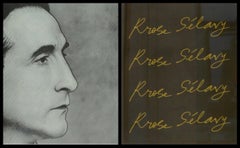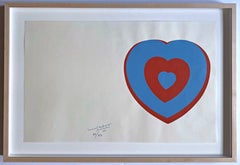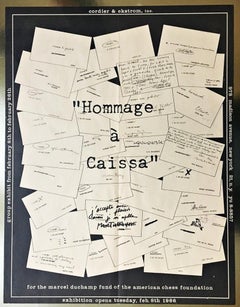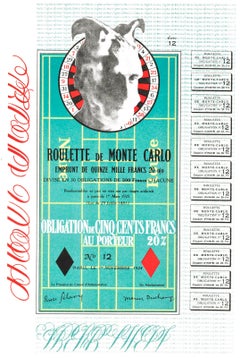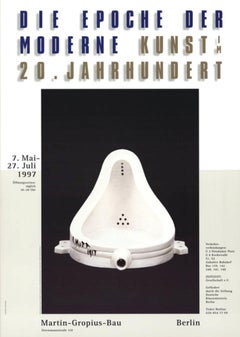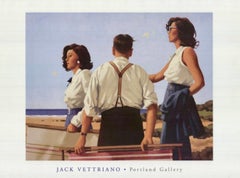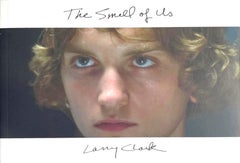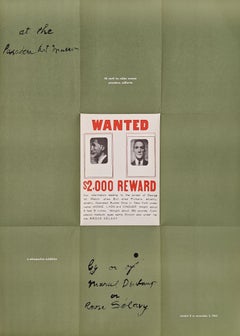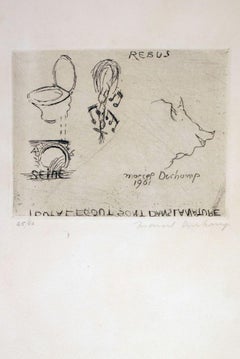Marcel Duchamp Figurative Prints
Marcel Duchamp was a French artist whose work is most often associated with the Dadaist and Surrealist movements. His output influenced the development of post-World War I Western art. Duchamp advised modern art collectors such as Peggy Guggenheim and other prominent figures, thereby helping to shape the tastes of Western art during this period.
A playful man, Duchamp challenged conventional thought about artistic processes and art marketing, not so much by writing but through subversive actions such as dubbing a urinal "art" and naming it Fountain. He produced relatively few artworks, while moving quickly through the avant-garde circles of his time.
“All in all, the creative act is not performed by the artist alone; the spectator brings the work in contact with the external world by deciphering and interpreting its inner qualifications and thus adds his contribution to the creative act,” said Duchamp.
Born on July 28, 1887, in Blainville, brother of the artist Raymond Duchamp-Villon and the painter Jacques Villon, Duchamp began to paint in 1908. After producing several canvases in the current mode of Fauvism, he turned toward experimentation and the avant-garde, producing his most famous work, Nude Descending a Staircase (No. 2) in 1912. Portraying continuous movement through a chain of overlapping Cubistic figures, the painting caused a furor at New York City's famous “Armory Show” in 1913.
Duchamp painted very little after 1915, although he continued until 1923 to work on his masterpiece, The Bride Stripped Bare by Her Bachelors, Even, an abstract work, also known as The Large Glass — composed in oil and wire on glass — that was enthusiastically received by the Surrealists.
In sculpture, Duchamp pioneered two of the main innovations of the 20th-century kinetic art and ready-made art. His "ready-mades" consisted simply of everyday objects, such as a urinal and a bottle rack. His Bicycle Wheel, an early example of kinetic art, was mounted on a kitchen stool.
After his short creative period, Duchamp was content to let others develop the themes he had originated; his pervasive influence was crucial to the development of Surrealism, Dada and Pop art.
Duchamp became an American citizen in 1955. He died in Paris on October 1, 1968.
Find a collection of authentic Marcel Duchamp prints, photography and other art on 1stDibs.
(Biography provided by David Barnett Gallery)
1960s Surrealist Marcel Duchamp Figurative Prints
Plastic, Mixed Media, Board, Pencil, Lenticular
1960s Dada Marcel Duchamp Figurative Prints
Screen, Pencil
1960s Dada Marcel Duchamp Figurative Prints
Screen
1930s Dada Marcel Duchamp Figurative Prints
Lithograph
1990s Contemporary Marcel Duchamp Figurative Prints
Lithograph, Offset
Early 2000s Contemporary Marcel Duchamp Figurative Prints
Lithograph, Offset
2010s Contemporary Marcel Duchamp Figurative Prints
Mixed Media, Lithograph, Offset
Mid-20th Century Cubist Marcel Duchamp Figurative Prints
Lithograph
1980s Surrealist Marcel Duchamp Figurative Prints
Paper, Screen
2010s Contemporary Marcel Duchamp Figurative Prints
Lithograph, Offset
1930s American Modern Marcel Duchamp Figurative Prints
Lithograph
Early 2000s Post-Impressionist Marcel Duchamp Figurative Prints
Archival Paper, Screen
Early 2000s Post-Impressionist Marcel Duchamp Figurative Prints
Archival Paper, Screen
2010s Surrealist Marcel Duchamp Figurative Prints
Giclée
1960s Folk Art Marcel Duchamp Figurative Prints
Lithograph, Archival Pigment
Early 2000s Post-Impressionist Marcel Duchamp Figurative Prints
Archival Paper, Screen
1960s Marcel Duchamp Figurative Prints
Lithograph
1960s Dada Marcel Duchamp Figurative Prints
Color
1960s Contemporary Marcel Duchamp Figurative Prints
Etching
Marcel Duchamp figurative prints for sale on 1stDibs.
- 1stDibs ExpertOctober 15, 2024The answer to whether Marcel Duchamp was a Surrealist artist is complicated. During his lifetime, the French artist resisted being labeled as a member of any art movement. Despite this, he is often associated with both the Dadaist and Surrealist movements. A provocative artist, Duchamp challenged conventional thought about artistic creation through subversive actions such as dubbing a urinal "art" and naming it Fountain. His influence was crucial to the development of Surrealism, Dada and Pop art. On 1stDibs, explore a range of Marcel Duchamp art.
- 1stDibs ExpertJanuary 19, 2025Marcel Duchamp's famous sculpture of Dadaism is widely considered to be Fountain. Its name was a playful subversion that shocked viewers when it was exhibited in 1917. The reason for the surprise? Duchamp's so-called “fountain” was actually a urinal. Although the original piece was either lost or destroyed, several museums have authorized reproductions of the work in their collections. Among them are the Philadelphia Museum of Art in Philadelphia, Pennsylvania; the San Francisco Museum of Modern Art in San Francisco, California; the Tate Modern in London, UK, and the Moderna Museet in Stockholm, Sweden. Explore an assortment of Marcel Duchamp art on 1stDibs.
